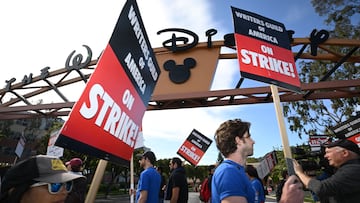WORK
Why are there so many strikes going on in the US?
The auto worker strike is the latest industrial action taking place in the US as workers push back against sliding work rights and stuttering pay.

146,000 auto workers will be on strike in the coming weeks. Three factories have been closed initially, while UAW president has said his union will expand the strike as much as they need until their demands are met.
They are not the only big union on strike right now. The film actor and writers strike (SAG-AFTRA) has also been ongoing since the summer. Films have been postponed and series put on hold as virtually no work is taking place in Hollywood right now.
The public are in support of the action of both major strikes. Approval of labor unions is also at its highest point since 1965, according to polling.
So why are they taking place now?
Nominally, it is because the workers are unhappy. A combination of pay (autoworker CEO pay has increased 42% in 4 years compared to workers’ 6%) and conditions (how the arts moves forward in the AI age) are often the case.
This is all coming to a head amidst high inflation and high interest rates, shrinking people’s purchasing power and putting their homes under threat. Other industries, like the tech companies, have been forcing a slew of workers out of a job. The unions will not accept the same for theirs.
Are there really so many strikes happening?
Despite the extra news coverage on labor issues in recent months, the reality is that trade unions are much weaker in the 21st century compared to the last century.
At their peak in the 1950s, around 35% of non-agricultural workers were union members. In the 1970s, which saw 70% more strikes compared to today, this percentage began to decline but was still relatively high compared to today. Last year, 10.1% of US workers were unionised.
The big turning point for unions was the 1980s. Politicians like Ronald Reagan in the US and Margaret Thatcher in the UK made it their job to break what they saw as the power of the unions and get the economy moving. Reagan and Thatcher both pursued aggressive deregulation and privatisation policies that led to job losses in sectors with strong union representation, such as manufacturing and mining.
So while the strikes now are making headlines, unions do not possess the powers they once had. Union leaders will be hoping their successes inspire other workers to join a union or create one for the first time, such as at Amazon or Starbucks.






